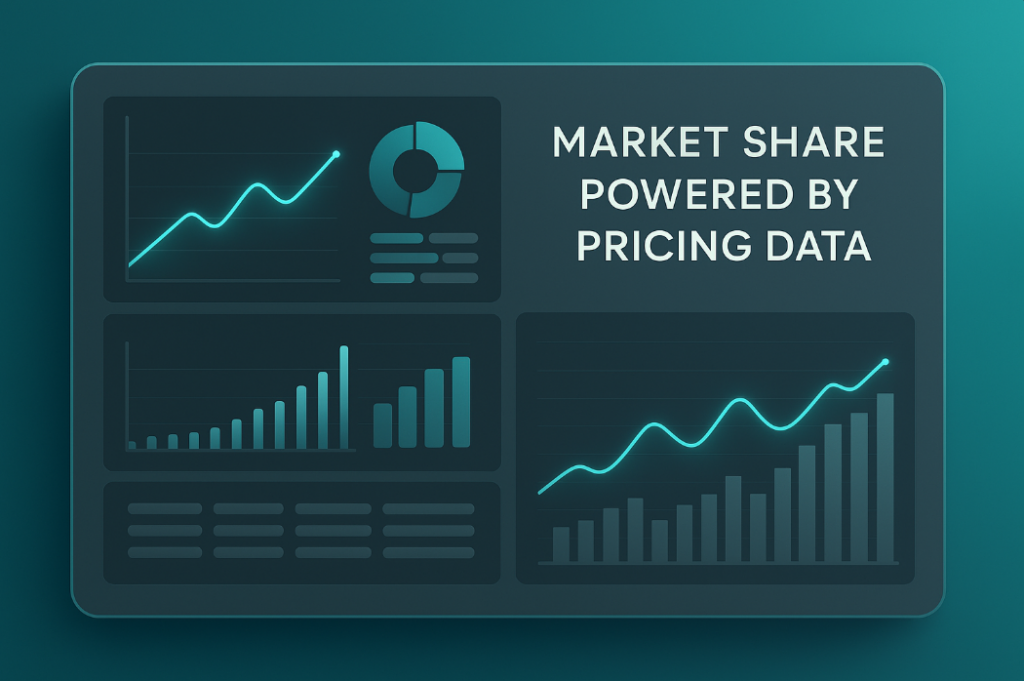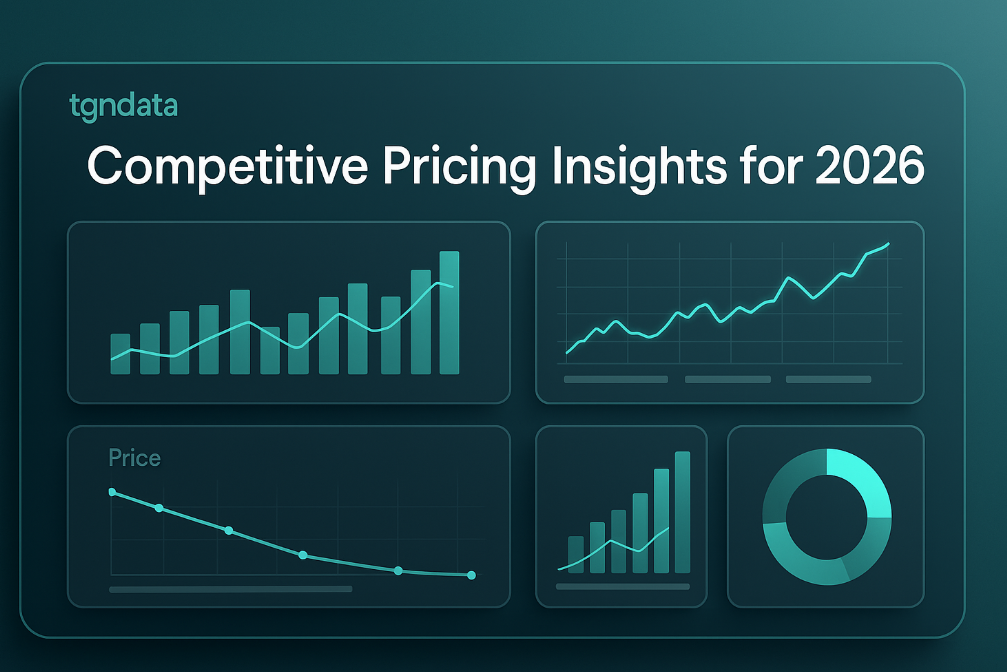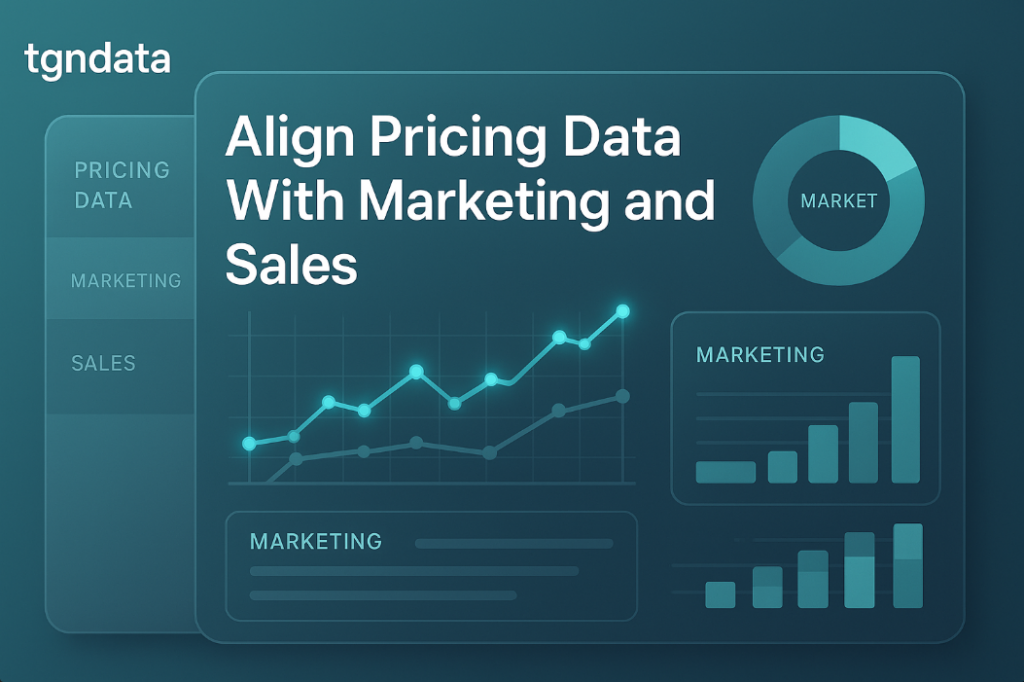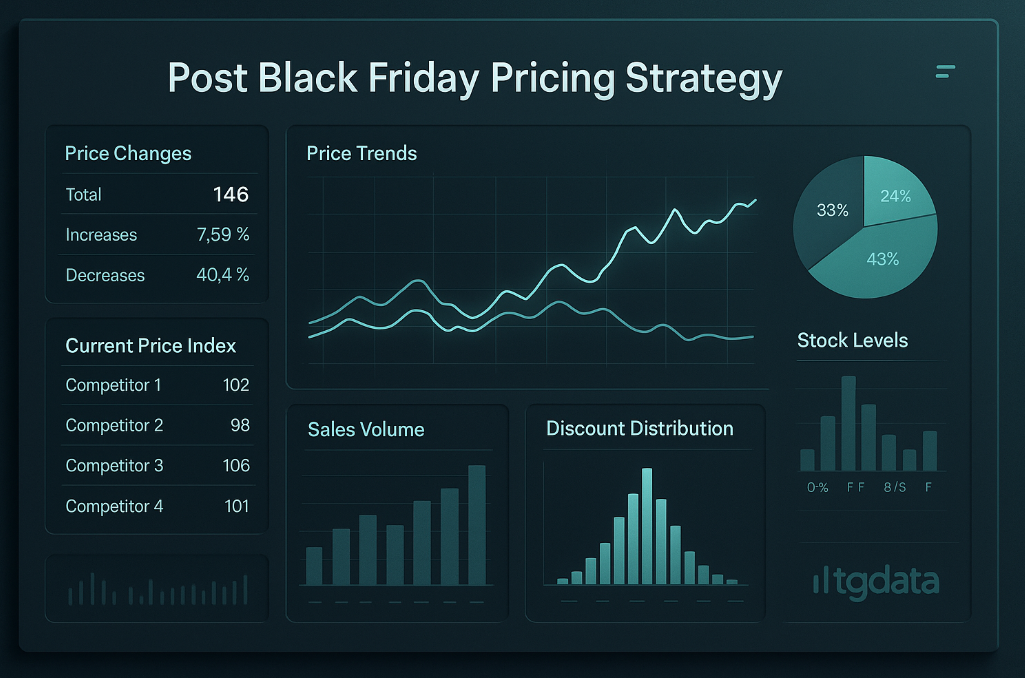- Product
- Solution for
For Your Industry
- Plans & Pricing
- Company
- Resources
For Your Industry
Tariffs aren’t just policy—they’re margin-impacting, strategy-shifting forces.
Sudden tariff hikes can make your landed costs unpredictable, disrupt your pricing models, and shake up supplier stability. Whether driven by political tensions, trade renegotiations, or localized import restrictions, tariff changes create ripple effects across your product, supply, and pricing strategies.
But while you can’t control tariffs, you can control how your organization prepares for them. Leading retailers and brands are shifting from reactive responses to proactive, data-powered planning.
In this guide, we break down how to prepare your business for tariff-driven volatility with a focus on:
Pricing intelligence
Stock availability tracking
Supply chain agility
Automation and forecasting
Data-led decision-making

Tariffs hit hardest when you don’t know where your vulnerabilities lie. A single point of failure in your sourcing model—like a supplier overexposed to new import taxes—can affect profitability, availability, and delivery times.
Categorize all at-risk SKUs based on their country of origin, supplier contracts, and tariff classification.
Build a tariff exposure matrix, scoring suppliers based on geographical risk, historical responsiveness, and lead-time resilience.
Review supplier contracts for escalation clauses, price renegotiation terms, and termination conditions.
Dual-source high-risk products to reduce dependence on any one supplier or region.
Evaluate nearshoring or reshoring options, especially for fast-moving or margin-sensitive SKUs.
Implement smart stock buffers with demand forecasting tools that dynamically adjust inventory thresholds based on tariff and logistics trends.
Insight: tgndata helps you track stock availability not just internally, but also across your competitors—so you can anticipate shortages or overstock opportunities in your category.
In times of uncertainty, the worst strategy is to rely on gut feel or static spreadsheets. Real-time, connected data gives you visibility into changing conditions and allows you to respond fast—with confidence.
Integrate internal ERP, POS, and supplier data with external price monitoring tools to detect shifts in cost, availability, and consumer demand.
Use tgndata’s real-time dashboards to monitor competitor pricing and product availability, particularly for tariff-sensitive products.
Regularly review and update KPIs tied to margin impact, sell-through, inventory aging, and cost of goods sold (COGS).
Reprioritize SKUs that are less exposed to tariff risk and remain competitively priced.
Use dynamic pricing engines to adjust prices based on changes in supply cost or competitor movements.
Explore bundling strategies to protect value perception while managing cost increases.
Example: One European electronics retailer reduced margin leakage by 18% by using tgndata to track cost and pricing fluctuations, then automatically adjusted prices across affected SKUs.
When your cost base is under attack, the most immediate lever is operational efficiency. Streamlining workflows, removing bottlenecks, and automating repetitive tasks help maintain profitability even when tariffs rise.
Automate manual pricing updates, order reallocation, and competitive tracking.
Implement alerts for key competitor price changes, MAP violations, or stockouts—empowering your team to respond instantly.
Roll out digital dashboards that give pricing, product, and logistics teams a shared source of truth.
Educate internal teams on how to interpret price and availability signals.
Run “war game” simulations based on sudden cost hikes or sourcing disruptions.
Train staff on tools like tgndata to make faster, smarter pricing and product decisions.
The most resilient brands and retailers don’t just react—they simulate. Scenario planning helps decision-makers prepare playbooks for what to do when tariffs change, before the chaos begins.
Create 3–4 pricing and margin scenarios based on potential tariff impacts.
Simulate best-case, base-case, and worst-case outcomes—and define actions for each.
Measure the price elasticity of key SKUs to know where you can (or can’t) pass on costs to customers.
Set aside contingency funds to absorb short-term shocks or capitalize on competitor weaknesses.
Renegotiate logistics or fulfillment contracts to introduce variable pricing models when tariffs increase.
You don’t need to guess what the market is doing—today’s competitive intelligence platforms give you daily visibility into what your rivals are charging, what they’re stocking, and when they’re adjusting.
Monitor real-time pricing and assortment data to spot gaps and optimize your offer.
Use benchmarking reports to understand your price position across categories and regions.
Layer in macro data—tariff timelines, policy changes, port delays—to inform demand and pricing decisions.
Pro tip: tgndata combines stock + price monitoring in one platform—allowing you to not only respond faster but also plan better.
Tariff uncertainty isn’t going away. But with the right data, workflows, and pricing intelligence, it doesn’t have to derail your profitability.
To future-proof your strategy:
Diagnose your exposure to tariff risks
Automate what you can, from pricing to stock tracking
Rely on real-time market data, not lagging reports
Scenario-plan across multiple cost/margin realities
Stay agile by combining internal insight with external signals
Retailers and brands that act now—while competitors delay—can turn volatility into market share.
[Talk to our team →] to see how tgndata helps leading brands stay profitable through market uncertainty.













Missing an important marketplace?
Send us your request to add it!